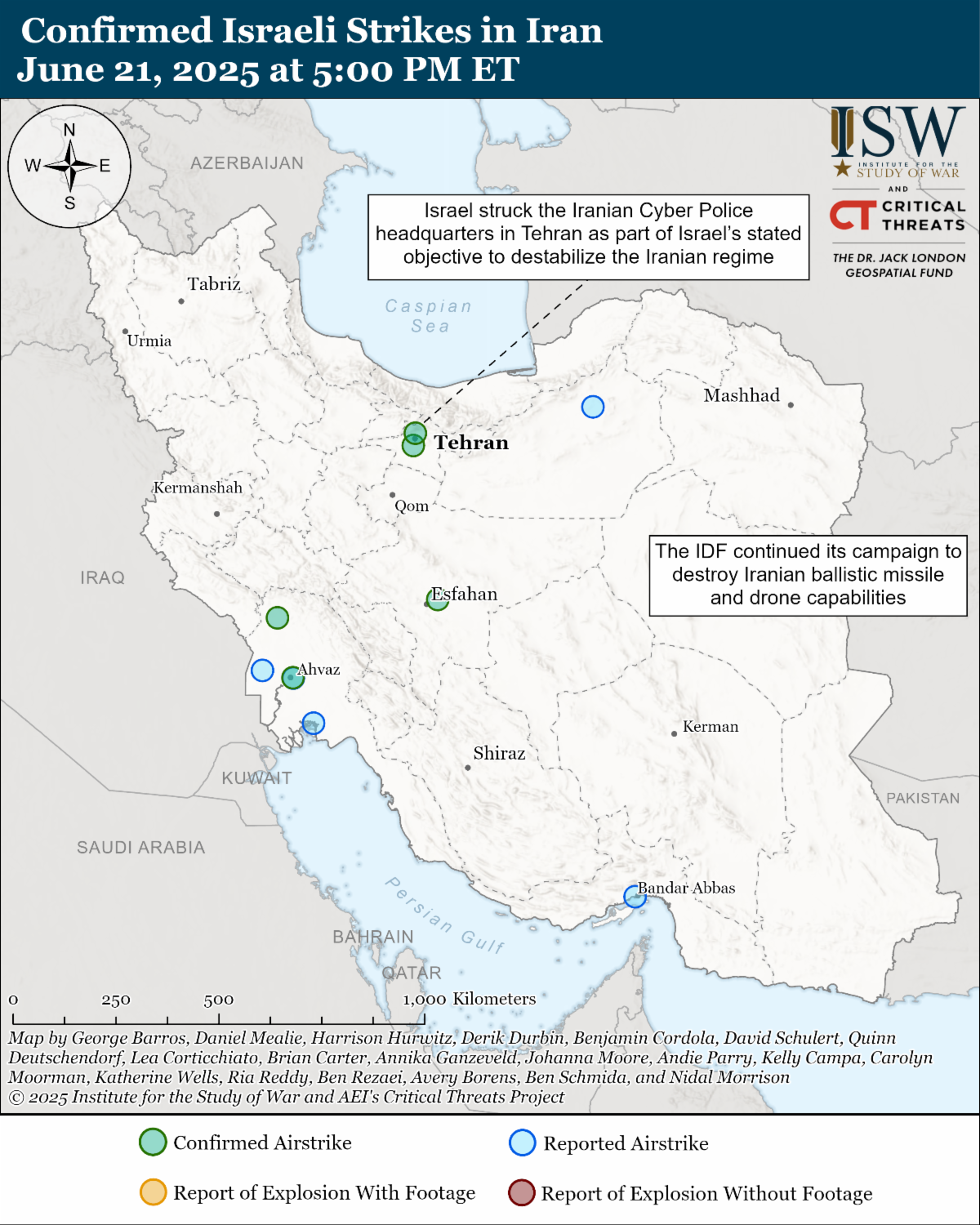Iranian Supreme Leader Ali Khamenei has begun implementing emergency succession measures in response to escalating Israeli strikes and the potential for US military involvement. Unspecified Iranian sources told the New York Times on June 21 that Khamenei has relocated to a secure bunker, suspended digital communications, and now communicates with senior commanders only through a trusted aide. Sources added that Khamenei named three senior clerics as candidates to replace him if he is killed. Khamanei also reportedly named replacements for top military commanders and ordered senior officials to work from underground offices and avoid using cellphones. These steps mark the first reported instance of Khamenei directly selecting potential successors outside the formal process of the Assembly of Experts. Khamenei likely took these steps amid heightened assassination fears, as some Israeli officials, including Israeli Defense Minister Israel Katz, have openly threatened Khamenei’s life. Two unspecified US officials told Reuters on June 15 that the US President Donald Trump vetoed an Israeli plan to kill Khamenei, however. Trump separately stated on June 17 that the United States knows “exactly where the so-called ‘Supreme Leader’ is hiding” but would not “take him out, at least not for now.” Khamenei’s previous actions indicate that the three possible replacements are almost certainly equally as ideological as he is. Khamenei previously met with the Assembly of Experts members in November 2024 and emphasized that the next Supreme Leader must “embody the revolution” and implement Islam in Iranian society. Khamenei did not name a successor at the meeting, however. Esfahan interim Friday Prayer Leader and Assembly of Experts member Abdolhasan Mahdavi confirmed a week after Khamenei’s meeting in November 2024 that the assembly had confidentially identified and prioritized three candidates for succession and framed it as “a routine responsibility.” The Assembly of Experts is an 88-member elected clerical body tasked with appointing, supervising, and—at least in theory—removing the Supreme Leader, though in practice it has never challenged the position and plays a limited role in day-to-day politics. The only previous leadership transition in Iran occurred in 1989 under different political conditions. The current assembly was elected in March 2024 and will serve until 2032.
It remains unclear who Khamenei selected as his potential successor. Unspecified sources added that Mojtaba Khamenei, Khamenei’s son and frequently rumored successor, is not among the designated candidates, however. Former President Ebrahim Raisi, another widely speculated figure, died in a helicopter crash in May 2024 and is no longer in consideration. Khamenei’s decision reflects his concerns about external threats and potential instability after his death, as the regime expects opposition groups and anti-regime actors to exploit any leadership vacuum. Opposition groups and anti-regime actors are more likely to try to exploit such a vacuum during a war.
Key Takeaways:
- The Iranian supreme leader named three unspecified senior clerics as possible successors in an effort to secure the future of the Islamic Republic in the event of his death. The limited open-source reporting about possible successors and the supreme leader’s view of his possible successors suggests that the three unspecified clerics are almost certainly equally as ideological as the current supreme leader.
- Israeli officials continue to assess that their air campaign has degraded Iranian ballistic missile capabilities, which is consistent with CTP-ISW's observations.
- The Iranian foreign affairs minister again rejected US demands for zero uranium enrichment during a June 20 meeting with European diplomats.
- The United States continued to deploy military assets to the Middle East.
- Israel has continued to conduct strikes targeting Iranian internal security and social control institutions, which could destabilize the regime over time.
| 




 [ISW] 이란 업데이트 특별 보고서, 2025년 6월 22일, 모닝 에디션
[ISW] 이란 업데이트 특별 보고서, 2025년 6월 22일, 모닝 에디션
 [ISW] 러시아의 공세 캠페인 평가, 2025년 6월 21일
[ISW] 러시아의 공세 캠페인 평가, 2025년 6월 21일